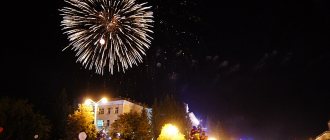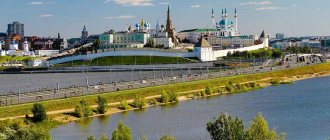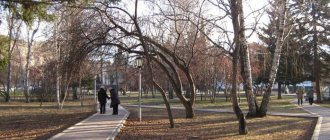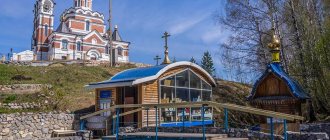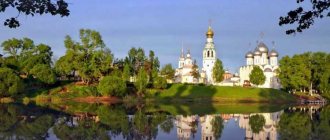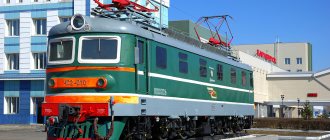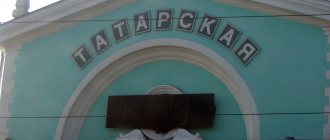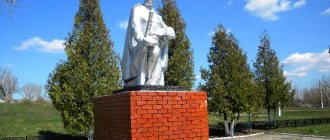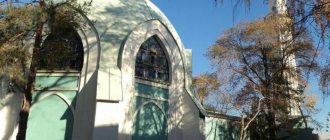In the southeast of the West Siberian Plain there is an amazing and picturesque region. Its past is covered in legends and traditions, and the land still hides secrets and mysteries.
The Novosibirsk region is one of the most hidden areas of the Siberian land. Although 5 of the territory is covered with forest, there is enough space for both small villages and large cities. The cultural, historical and industrial center of the region is Novosibirsk. The history of the region and its capital is reflected in historical and cultural monuments, unique collections of numerous museums.
Novosibirsk State Academic Opera and Ballet Theater (NSATOiB)
Novosibirsk State Academic Opera and Ballet Theater
Address: Novosibirsk, Krasny Prospekt, 36
The theater building is not only one of the main cultural and architectural monuments. It first opened its doors in 1945 after the end of World War II, although construction began back in 1931. Until that moment, unique exhibits from the Hermitage, the Tretyakov Gallery and other masterpieces of art were stored inside the unfinished building.
The Opera and Ballet Theater is shrouded in many secrets. The most famous legend is that under the building there is a real underground city, which includes 5 levels. But the rumors were not scientifically confirmed, remaining only a beautiful mysterious story.
Inside the building, antique statues deserve special attention, capable of sending visitors back in time for a few minutes. The interior is not sophisticated or complex, but it looks very elegant. Huge crystal chandeliers shed light from the ceiling. But the greatest delight is caused by the huge dome towering over the building and the bright flickering lights that illuminate the theater at night.
The Novosibirsk State Academic Opera and Ballet Theater is located on the central square. Its size is amazing and attracts the attention of tourists passing by. You can notice the building on many souvenirs and postcards, because the theater is considered one of the calling cards of the city. The theater's repertoire includes many famous productions, both Russian and well-known foreign directors.
House-Museum of P.P. Bazhova
Address: Novosibirsk region. With. Bergul, st. Central, 29
The famous Ural storyteller stayed for several months (March-June 1919) in a small village in the Novosibirsk region. Here he not only rested his soul, sought inspiration for writing new works, but also became the first teacher at a local school. In memory of P.P. Bazhove native. Bergul - A.M. Belova began to found the museum. The grand opening took place in January 1984.
The interior of the main halls is designed based on the fairy tales of P. P. Bazhov. The decorations are made using malachite and mosaics. One of the rooms is equipped with a writer's office. Here you can see the table at which Bazhov worked, a hanging mirror and an antique cabinet. The walls are hung with memorable photographs of the writer, books published in different years, letters from the writer and his students are displayed on the shelves. Among them there are several unique specimens, preserved in the singular. In total, the collection of the house-museum includes more than 2 thousand exhibits.
Every year, museums host “Bazhov Days” - events dedicated to the birthday of the Ural storyteller.
The exhibition dedicated to the writer is not the only one: 3 more interesting exhibitions are open in the house-museum:
- Agricultural tools for processing flax and hemp;
- Stove corner;
- Household items of the 19th – 20th centuries.
Novosibirsk Museum of Railway Equipment
Address: Novosibirsk, st. Seyatel, st. Razdolnaya, 35
Novosibirsk Museum of Railway Equipment
Every year, more than 50 thousand tourists come to look at the numerous exhibits, stroll through the huge halls and see with their own eyes the model trains collected in the museum. It is named after the honorary veteran railway worker N.A. Akulin. In 1966, he had the idea of creating a museum, and every year he increasingly brought it to life. The grand opening took place in 2000. The first visitors saw only 63 exhibits, but this small number continued to grow.
Museum visitors will be able to see real railway equipment, individual cars or complete trains. They date back to the 19th-20th centuries, and each of them was used for its intended purpose several decades ago. The museum covers an area of 3000 m². It is divided into several thematic zones, each of which is dedicated to a specific type of railway transport: steam locomotives, electric locomotives, diesel locomotives, electric trains, individual cars and railway equipment.
Where to stay in Novosibirsk
Novosibirsk ranks first on the list of the largest cities in Russia. There are no problems with housing for tourists, only if it is difficult to choose among the variety. The city has more than a hundred hotels, old-timers or new complexes, six of which are part of large global chains, offering eight times more apartments and a decent selection of forty hostels. Choosing housing in Novosibirsk will most likely require an integrated approach: taking into account location and price, star rating, visual attractiveness and personal preferences.
Maybe you want to stay closer to the park, for example, in Sosnovy Bor or Ramada Novosibirsk Zhukovka, to breathe the fresh air of the pine forest. Or check out the theater nearby, like the hotel, so you don’t have to go back too far in the evening. If you admire the panorama sparkling with lights, choose housing in the center, near Krasny Street Avenue. Kirov, love the water landscape - apartments in high-rise buildings on the banks of the Ob River or River Park. Some of the hotels have a large swimming pool, sauna and spa center, where it is pleasant to relax after an exciting walk, or are located near city beaches, which is important in the summer. Various filters in the search engine will help you find your place of residence based on specific parameters.
- Novosibirsk Hotels
- Hostels for Budget Travelers
- Flats and apartments
A traveler may need:
- Hotels near Tolmachevo airport
Before booking your stay on Booking.com, take a look at the page: Cashback promotion for Tourist. RU
Unusual facade - Novosibirsk Puppet Theater Photo: © Olga Klein
Alexander Nevsky Cathedral
Address: Novosibirsk, Krasny Prospekt, 1a
Alexander Nevsky Cathedral
Construction, headed by engineer N.M. Tikhomirov, began in 1897. 2 years later, the building was completely completed. The temple was painted by the most talented icon painters from the Tomsk workshop of I. A. Pankryshev.
The cathedral was illuminated in 1899. The building underwent numerous reconstructions and somewhat changed its original appearance. The temple was built primarily in the neo-Byzantine style, which was most popular at the turn of the 19th and 20th centuries. Its features can be seen by looking at the central squat dome resting on a low, wide drum.
The interior of the building has practically not been preserved since its construction. Restorers carefully tried to find traces of previous fragments of frescoes on the wall, but their attempts were in vain. Painting dating back to the last century was found only in the drum. It depicts various full-length figures. Due to the fact that the pre-revolutionary painting cannot be restored, a new one was made. The artist P. A. Milovanov coped with his task perfectly. The new painting gave the temple a certain idleness and mystery. It is almost impossible to take your eyes off it, because when entering the cathedral, bright picturesque paintings are the first thing that catches your eye.
Main city monuments
Monuments of Novosibirsk include several special sculptures that tell citizens and tourists about significant historical stages of the region and country.
Glory Monument
A monument to Siberians who participated in the Second World War was erected on the street. Stanislavsky in Glory Square in 1967
The memorial ensemble with an area of 2 hectares includes:
- Square of Sorrow and Sorrow with the monument to the Sorrowful Mother;
- bowl of eternal fire;
- 5 10-meter obelisks. On one side, they contain the data of Novosibirsk residents who died at the front. War scenes are depicted on the back.
In the first years of the 20th century. The “Chapel of St. George the Victorious” was installed here, dedicated to the Siberians who died in the hostilities of the last century. In 2005, the composition was replenished with the Alley of SS Heroes and full holders of the Order of Glory. There are 270 names engraved on concrete steles dedicated to Novosibirsk residents and residents of the region. The memorial composition includes military equipment.
Revolution Heroes Square
This memorial complex is located in the central part of Novosibirsk.
The composition includes:
- Mass grave of 104 victims of the Civil War, and mass grave of the Novonikolaevsk Council of Workers', Peasants' and Soldiers' Deputies
- The graves of P. E. Shchetinin, the leader of the Soviet Siberian partisan movement, and A. F. Lejeune, a participant in the Paris Commune. In the early 70s, the second was reburied in Père Lachaise.
- The panel, located on Red Avenue, serves as a reminder of the courage of peasants, workers, and soldiers.
Monument to V.I. Lenin
There are many sculptures of the “Leader of Nations” in Novosibirsk, but the most remarkable one is located on Lenin Square. The opening of the monument was timed to coincide with the 100th anniversary of V.I. Lenin. A bronze sculpture of the leader stands on a gray polished granite pedestal.
On the right side of her are the figures of a worker, a soldier and a peasant. On the left hand of the monument there is a guy with a torch and a girl with ears of corn. The composition carries the meaning of monumental art of federal significance.
Monument to V.S. Vysotsky
On the street Chaplygin in 2005, a monument to V.S. Vysotsky was unveiled. Marble pedestal on which V.S. stands barefoot. Vysotsky, made in the form of a blade with a red inscription. The poet's right hand is raised up; in his left hand he holds a guitar.
Initially, Yorick’s skull lay at the feet of Vladimir Semyonovich, but after some time he disappeared. In 2006, an alley of bards was organized next to the monument.
Umrevinsky prison
Address: Novosibirsk region, Moshkovsky district, pos. Umreva (about 100 km from Novosibirsk)
Umrevinsky prison
One of the most significant monuments in the history of the Novosibirsk region. Ostrog at the mouth of the river. Umrev was built on the initiative of the Russian Cossack Alexei Kruglikov at the beginning of the 18th century. and became the first defensive structure on the southern border of the Tomsk district from raids of nomadic tribes and the first administrative unit on the territory of the Novosibirsk region.
Initially, the Umrevsky fort had the appearance of a regular quadrangle. A defensive wooden wall with 3 watchtowers on the outside was surrounded by a moat filled with water. Inside the fort, a temple to the Three Saints, grain storage barns and a clerk's house were built.
None of the buildings have survived to this day, but archaeologists managed to find the remains of the building foundations and walls. Based on the findings, the chapel, the fort church and one of the towers have already been reconstructed.
Umrevsky fort is included in the list of architectural monuments of federal significance.
Mansion of merchant M.D. Zhernakova
Mansion of merchant M.D. Zhernakova on Kommunisticheskaya street (Gudimovskaya), house 43 in the historical center of Novosibirsk Novo-Nikolaevsk. The residential building was built in 1912. The house is recognized as an architectural monument of regional significance (Reg. Regional Council dated July 18, 1990 No. 282). At the moment (2009) the building is occupied by a gun showroom.
The monument is an example of a merchant's residential building, typical of pre-revolutionary Novonikolaevsk. Plot occupied by a one-story brick house on the street. Kommunisticheskaya, 43 (formerly Gudimovskaya), belonged to the famous merchant Maria Danilovna Zhernakova in Novonikolaevsk. She was the owner of several houses in the central part of the city and rented them out.
Museum-temple in honor of the new martyrs and confessors of the Russian Church at the Holy Spring
Address: Novosibirsk region, Iskitim, Lozhok district
For 27 years (1929-1956), the Iskitim penal camp was located on this piece of land (point No. 4 of the SibLAG). Tens of thousands of people served their sentences here in cruel conditions. Along with the brutal murderers, innocent citizens who had become victims of repression were kept in the cells of the camp. Many of them died from hard labor, bullying and beatings by guards. In the early 1930s. Several clergy were shot in the camp courtyard. The bodies of the martyrs were thrown into a freshly dug trench and covered with earth, although some of them were still breathing.
Years later, at the site where prisoners were executed, a key emerged from the ground. The water from the spring is considered holy. People believe in its miraculous healing power and come here in the hope of getting rid of illnesses. A font and a small chapel were built next to the source. On a small hill not far from the Holy Key stands the Temple, which opened its doors to believers in 2015. In July 2022, a museum was opened in the church on the ground floor; the exhibition is dedicated to the times of repression and persecution of clergy.
Posts 1 page 50 of 104
Share121-08-2009 14:46:47
- Author: Alic
- Administrator
- Rating:
- From: Trekhgorny
- Registered: 07/18/2009
- Posts: 520
- Respect: +89
- Positive: +12
- Gender: Male
- Time spent on the forum: 10 days 14 hours
- Last visit: 14-09-2019 13:30:12
Formed from part of the territory of the Dzerzhinsky district on October 20, 1980. In December 1997, the working village of Pashino was included in the district. Territory: 41.2 sq. km Population: 171.1 thousand people Main streets: Bogdana Khmelnitskogo, Uchitelskaya, Obedinenie, Kurchatova. There are about 70 streets and alleys running through the territory. The total length of the streets is 75 km. On the territory of the district: • 2950 enterprises, including 15 large and medium-sized (JSC Novosibirsk Chemical Concentrates Plant, state enterprise Novosibirsk Mechanical Plant Iskra, JSC Promstalkonstruktsiya, PA Sever, PA Elektron) of which 2675 small business enterprises • 31 secondary schools, Orthodox gymnasium, “Eco-school”, “Steps”, “Harmony”, 7 secondary educational institutions, a polytechnic college and non-state - college of psychology, business college, as well as 2 vocational lyceums and 2 vocational schools, Siberian University, 6 municipal teenage clubs • 9 medical institutions, a large outpatient network, municipal hospital No. 25 • Sports Palace “Siberia”, sports complex “North”, swimming pool “Neptune”, PKiO “Sosnovy Bor”, DK im. Gorky, the Cosmos cinema, the Otdykh club and other leisure institutions • 3 trolleybus, 2 tram, 14 bus routes.
Share221-08-2009 20:16:55
- Author: Olga
- Administrator
- Rating:
- From: Novosibirsk
- Registered: 07/19/2009
- Posts: 16870
- Respect: +3105
- Positive: +4584
- Female gender
- Spent on the forum: 3 months 13 days
- Last seen: Today 10:01:29
Kalininsky district is the youngest district of Novosibirsk, this year it turns 29 years old. But this is only according to the passport. Administratively, its territory was partly part of the Zaeltsovsky and, to a greater extent, the Dzerzhinsky districts of the city. It was formed in connection with the planning for the construction of large residential areas in the northern part of the city. And people lived here before the revolution, in the area of Bogdan Khmelnitsky Street, which was then called Krasnaya Gorka. Red means beautiful. Later, the name Krasnaya may have been given a revolutionary meaning, since May Day meetings were often held in the birch groves of Krasnaya Gorka.
It is interesting and eerie to read the memoirs of the writer Yuri Magalif about the construction of Novosibirsk during the war years, which the famous writer spent here as a prisoner. He also paid some attention to our region: And now we worked 12-14 hours a day. And how they worked! Throughout the war years, Novosibirsk was built fantastically quickly. Powerful factories sprang up. Residential areas were formed. And mostly all this was built by forced people - mostly political prisoners: “counter-contractors” and partly “bytoviki”. As usual, seasoned criminals - “godfathers”, “thieves in law” - did not go to work. In late autumn, on a warm sunny day, our 257th brigade was led into a dense birch forest not far from the camp. We felled thick trees, uprooted stumps, and then dug large dugouts. “And who will live here? - I asked. “For whom are we digging earth in such a wilderness?” “I think it’s for the evacuees,” answered the foreman. We completed the excavation work, and after us a team of carpenters came here. And three years later, when for some reason our column was led through the same places, Tatyana Vsevolodovna Meyerhold, walking next to me in the line, admired: “Look, Yura, what a wonderful street in the birch forest! Just a fairy tale! And what an idyll - sun, greenery, whitewashed houses. This is where to live and live. “Today, on this very spot stands the very venerable Palace of Culture named after. Gorky.
The area's territory really began to develop from the moment the factories were built. The largest of them, of course, is NZHK. Over the years of the district’s existence, new large microdistricts have been built: “Snegiri”, “Rodniki”, “Yubileiny”, “Plekhanovsky”. The Kalininsky district occupies one of the leading positions in the city's economy: about 22% of Novosibirsk's goods and services are produced here.
Historical and memorial complex "Railway Bridge"
Address: Novosibirsk, Central district
The main monument of Novosibirsk and the calling card of the city is located near the Oktyabrskaya pier.
Work on the construction of the first railway bridge at the intersection of the river. The Ob and Trans-Siberian Railways began in 1893. This year is considered to be the founding of the city of Novonikolaevka, now Novosibirsk. The project of a large-scale structure for those times belongs to the outstanding engineer N.A. Belilyubsky. Four years later, the bridge was put into operation. This event became significant in the history of the development of railway communication in Russia.
The engineering structure across the Ob became the first where metal structures of the cantilever-baroque type were used during the construction process. There were 9 of them in total. The total weight of the ceilings was 270 thousand pounds, and they were manufactured at the Botkin plant. The miracle of engineering technology cost the royal treasury 2 million rubles.
In 1990, it was decided to dismantle the century-old bridge, but one of the spans was still left and turned into a museum exhibit.
